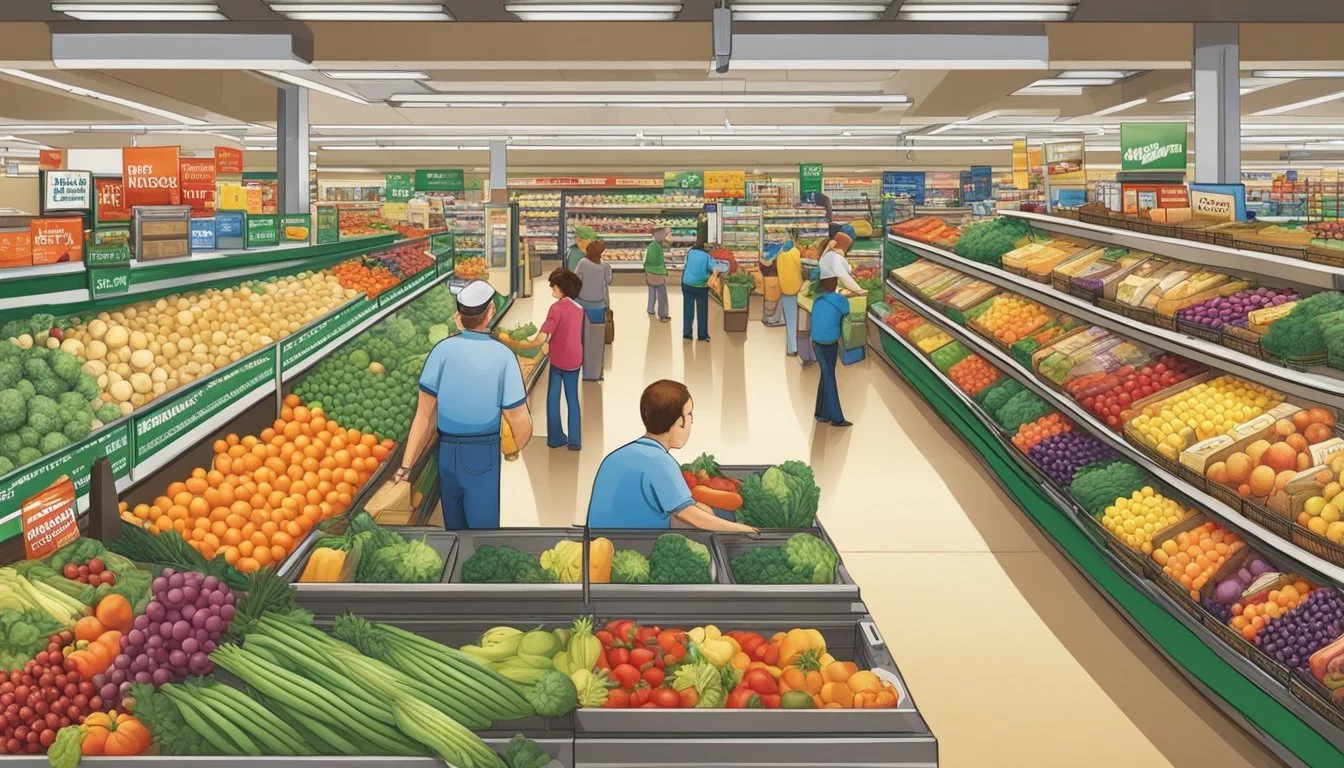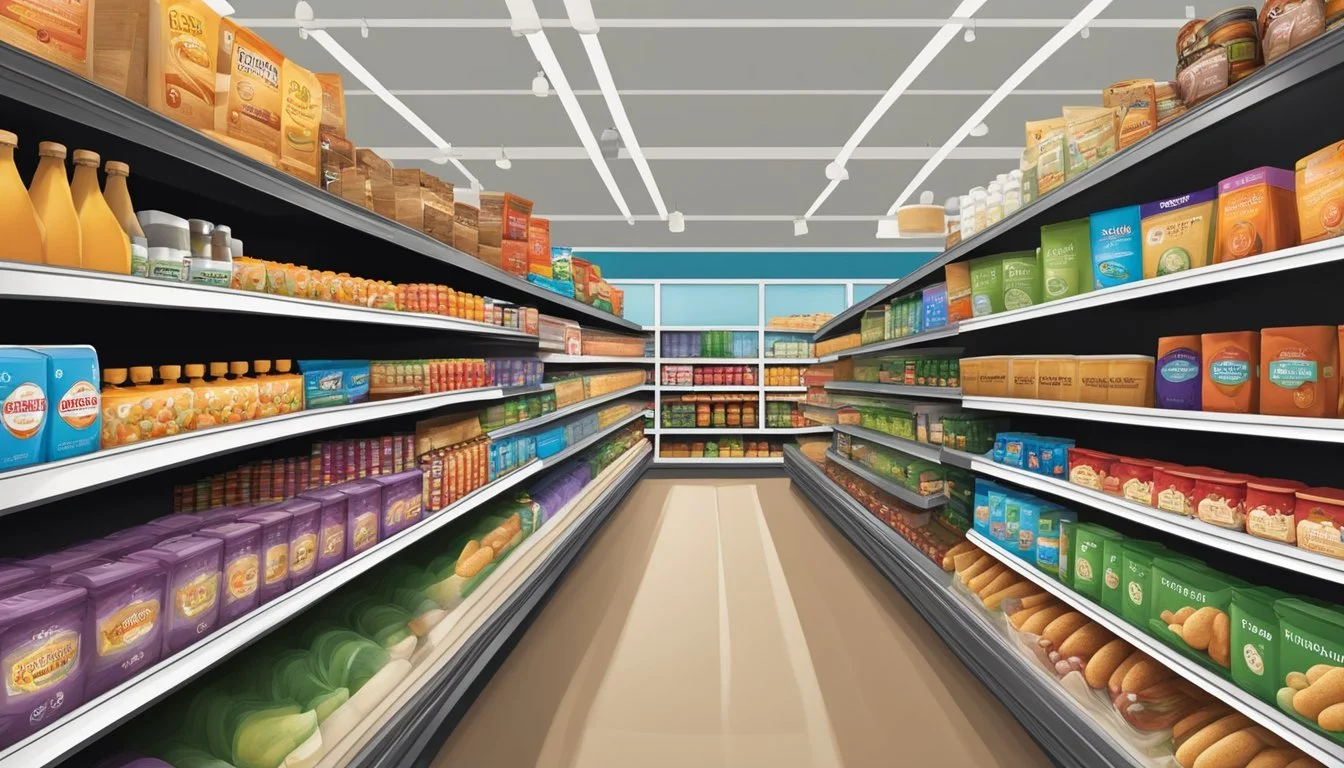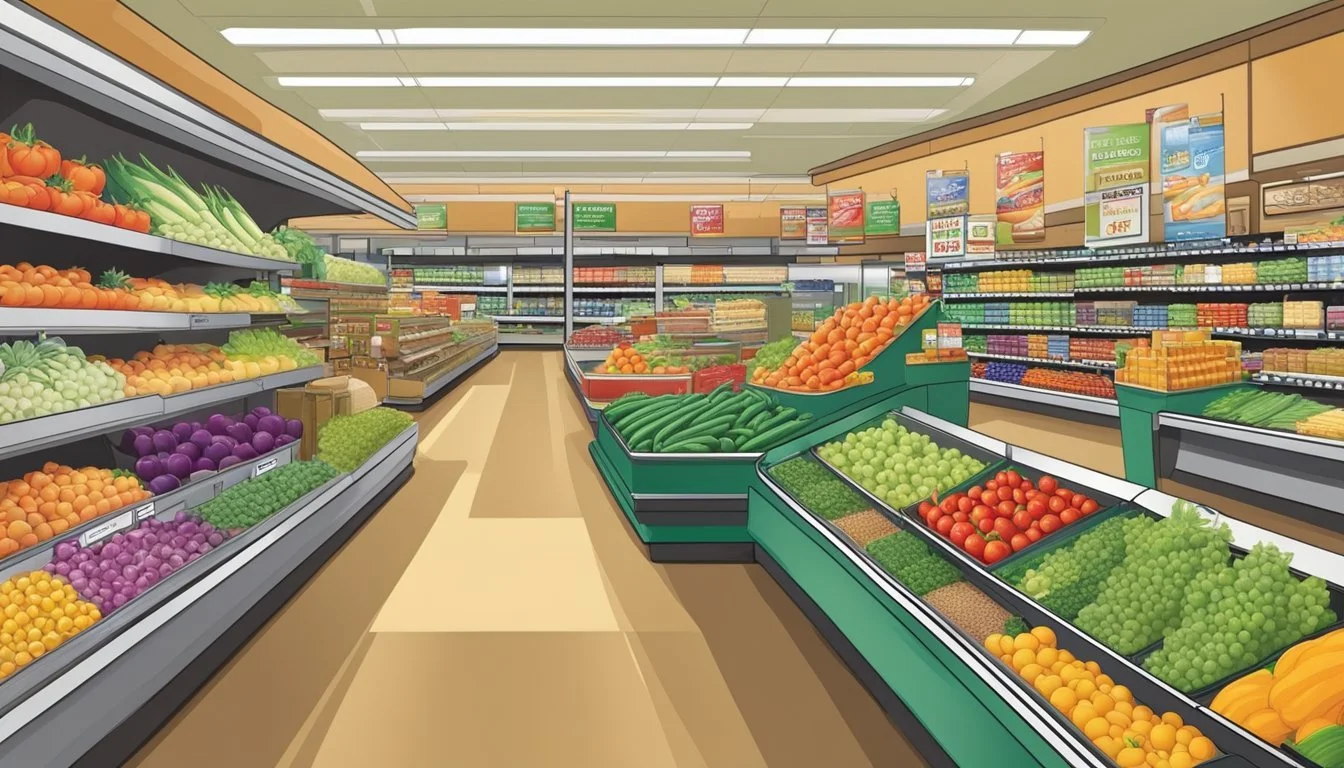Hannaford vs Meijer
A Comprehensive Comparison of Price, Quality, and Selection
Hannaford and Meijer are both popular grocery store chains that have earned loyal customer bases in their respective regions. Hannaford, primarily serving the Northeastern United States, has built a reputation for offering high-quality local products and maintaining environmentally friendly practices. Meijer, on the other hand, is known for pioneering the superstore concept, combining groceries with general merchandise under one roof.
When comparing these two retailers, several factors come into play. While Hannaford excels in its commitment to local sourcing and sustainability, Meijer offers a broader range of products and services due to its superstore format. Both chains strive to provide competitive prices, though the extent of savings can vary depending on specific locations and promotions.
Customer experience is another crucial aspect to consider. Hannaford's smaller footprint often translates to a more manageable shopping experience, while Meijer's larger stores offer greater variety but may require more time to navigate. Ultimately, the choice between Hannaford and Meijer may come down to individual preferences, shopping habits, and geographical availability.
Overview of Hannaford and Meijer
Hannaford and Meijer are two prominent grocery store chains in the United States. Both offer a wide selection of products and aim to provide quality shopping experiences for their customers.
Hannaford, founded in 1883, operates primarily in the Northeastern United States. The chain is known for its focus on fresh produce, local products, and commitment to sustainability.
Meijer, established in 1934, has a strong presence in the Midwest. It pioneered the supercenter concept, combining groceries with general merchandise under one roof.
Both stores offer:
Fresh produce
Bakery and deli departments
Meat and seafood counters
Household essentials
Pharmacy services
Hannaford emphasizes its "Guiding Stars" nutrition navigation system, helping customers make informed food choices. Meijer, on the other hand, is recognized for its larger store formats and extensive non-grocery selections.
Customer service is a priority for both chains. They strive to create welcoming environments and offer various conveniences such as online ordering and pickup services.
Pricing strategies differ between the two. Hannaford focuses on everyday low prices, while Meijer often features weekly sales and promotions.
In terms of size, Meijer typically operates larger stores compared to Hannaford. This allows Meijer to offer a broader range of non-grocery items, including clothing, electronics, and home goods.
Assessing Variety and Quality of Goods
Hannaford and Meijer both offer diverse product selections, but they differ in key areas. Each store has strengths in certain departments and product categories.
Produce Selection
Meijer's produce department resembles a farmers market, with a wide array of fruits and vegetables. They stock many unique and exotic options alongside standard produce. Meijer also maintains a robust organic produce section.
Hannaford focuses on sourcing from local farms when possible. Their produce selection may be slightly smaller but emphasizes freshness and regional options. Hannaford also offers organic choices, though the variety may be more limited than Meijer's.
Both stores prioritize quality, but Meijer tends to have a slight edge in overall produce variety.
Meat and Seafood
Meijer offers an extensive meat selection, including various cuts and specialty items. Their seafood counter typically stocks a good range of fresh fish and shellfish options.
Hannaford prides itself on high-quality meats, often sourced from local farms. Their seafood selection may be smaller but focuses on sustainably sourced options.
Both stores maintain strict quality standards for their meat and seafood departments.
Bakery and Deli
Meijer's bakery department produces a wide range of fresh bread, pastries, and cakes daily. Their deli offers many prepared foods and made-to-order options.
Hannaford's bakery focuses on artisanal breads and high-quality baked goods. Their deli section, while smaller, emphasizes fresh, store-prepared foods using quality ingredients.
Both stores offer custom cake decorating services and a selection of specialty cheeses.
Dairy and Refrigerated Items
Meijer stocks a comprehensive range of dairy products, including national brands and their own private label options. They often have competitive prices on staples like milk and eggs.
Hannaford offers a good selection of dairy items, with an emphasis on local and organic options when available. They may have a smaller variety but focus on high-quality products.
Both stores maintain well-stocked yogurt, cheese, and alternative milk product sections.
Pantry Staples and Dry Goods
Meijer typically has a larger selection of pantry staples and dry goods due to their larger store format. They stock a wide variety of brands, including many budget-friendly options.
Hannaford offers a solid range of pantry items, with a mix of national brands and their own private label products. They may have fewer specialty or gourmet options compared to Meijer.
Both stores provide competitive pricing on common items and frequently run sales on popular staples.
Pricing Strategies and Affordability
Hannaford and Meijer employ distinct pricing approaches to attract and retain customers. Both chains offer competitive pricing, though their strategies differ in key areas.
Everyday Prices and Deals
Meijer is known for its consistently low prices across a wide range of products. The retailer often uses a everyday low price model, minimizing the need for frequent sales. Hannaford, while competitive, may have slightly higher everyday prices but compensates with regular promotions and weekly specials.
Meijer's hybrid model, combining groceries with department store offerings, allows for more diverse pricing strategies. This can lead to better deals on non-grocery items. Hannaford focuses primarily on groceries, which may result in more specialized food-related discounts.
Both stores use loss leaders - deeply discounted popular items - to draw customers. These often include staples like milk, bread, and eggs.
Comparison with Other Retailers
When compared to other major grocery chains, Meijer tends to offer lower prices overall. Studies have shown Meijer's prices to be about 11% below the average of surveyed stores in some areas. This puts them in line with discount giants like Walmart.
Hannaford's pricing is generally competitive but may not match the rock-bottom prices of some discounters. However, they often excel in the quality and variety of their fresh produce and store-brand items.
Both chains typically outperform traditional supermarkets like Kroger in terms of affordability. They also generally offer better prices than Target on grocery items, though Target may have edges in other departments.
Loyalty Programs and Saving Opportunities
Meijer's mPerks digital coupon program allows customers to clip and redeem coupons electronically. The program also offers personalized rewards based on shopping habits. Frequent shoppers can earn additional discounts on future purchases.
Hannaford's My Hannaford Rewards program provides a straightforward 2% earnings on most store-brand items. These rewards can be redeemed quarterly for discounts on future shopping trips.
Both programs are free to join and can lead to significant savings over time. Meijer's program tends to offer more varied rewards, while Hannaford's is simpler and focuses on store-brand purchases.
Customer Experience and Services
Hannaford and Meijer prioritize customer satisfaction through various aspects of their store design and services. Both chains aim to create pleasant shopping environments while offering convenient options to meet diverse customer needs.
Store Layout and Cleanliness
Hannaford stores feature wide aisles and logical product placement, making navigation easy for shoppers. Their commitment to cleanliness is evident in well-maintained floors and shelves.
Meijer stores often have a larger footprint, incorporating both grocery and general merchandise sections. This layout can be advantageous for one-stop shopping but may require more time to navigate.
Both chains emphasize cleanliness, with regular cleaning schedules and prompt attention to spills or messes. Meijer's larger stores may present more challenges in maintaining consistent cleanliness throughout all departments.
Checkout Efficiency
Hannaford offers multiple checkout options, including self-service kiosks and traditional cashier lanes. Their focus on efficiency often results in shorter wait times, especially during peak hours.
Meijer also provides various checkout options, including their "Shop & Scan" technology that allows customers to scan items as they shop. This can significantly reduce time spent at the checkout.
Both stores generally maintain adequate staffing levels to handle customer volume, though experiences may vary based on location and time of day.
Additional Services
Hannaford provides pharmacy services in many locations, along with a selection of prepared foods for quick meal solutions. They also offer online ordering with curbside pickup options.
Meijer offers a wider range of services, including:
Full-service pharmacies
Pet care departments
Extensive prepared food sections
Grocery delivery options
Meijer Optical centers in select stores
Both chains cater to families with child-friendly cart options and often feature in-store events or promotions. Meijer's larger format allows for a more diverse range of additional services, potentially appealing to a broader customer base.
Market Position and Brand Perception
Hannaford and Meijer occupy distinct positions in the grocery retail landscape, with each cultivating a unique brand identity and customer base. Their market standing and consumer perception are shaped by various factors, including loyalty programs, survey results, and competitive strategies.
Brand Loyalty and Shoppers' Preferences
Hannaford has built a loyal following in the Northeast, particularly in Maine where it originated. The company focuses on fresh, high-quality products and local sourcing, appealing to health-conscious consumers and those who prioritize supporting regional producers.
Meijer, a Midwest staple, attracts shoppers with its supercenter format. The retailer combines groceries with general merchandise, making it a one-stop shop for families. This convenience factor has helped Meijer secure a strong market position in states like Michigan and Ohio.
Both chains have implemented loyalty programs to boost customer retention. Hannaford's My Hannaford Rewards and Meijer's mPerks offer personalized deals and discounts, incentivizing repeat visits and fostering brand allegiance.
Consumer Reports and Surveys
In recent consumer surveys, both Hannaford and Meijer have performed well, though their rankings vary. Consumer Reports has consistently placed Hannaford in the top tier of supermarkets, praising its cleanliness, staff courtesy, and checkout speed.
Meijer, while not typically ranking as high as Hannaford in national surveys, has received recognition for its competitive pricing and product variety. The retailer has scored particularly well in regional studies focused on the Midwest market.
Key criteria in these surveys often include:
Price competitiveness
Product quality and freshness
Customer service
Store cleanliness
Checkout efficiency
Competitive Edge
Hannaford's competitive edge lies in its focus on fresh, locally-sourced products and its strong presence in smaller communities. The chain has invested in private label offerings, which appeal to budget-conscious shoppers without compromising quality.
Meijer leverages its supercenter format to compete effectively against both traditional grocers and big-box retailers. The company's "Higher Standards, Lower Prices" slogan reflects its strategy of offering a wide selection at competitive prices.
Both retailers have expanded their digital presence, recognizing the growing importance of online shopping and curbside pickup options. This adaptability has helped them maintain market share in the face of e-commerce competition.
Meijer's larger footprint allows for more extensive non-grocery departments, potentially drawing customers seeking a broader shopping experience. Hannaford, with its more compact stores, emphasizes efficiency and a curated product selection tailored to local preferences.
Community and Environmental Impact
Hannaford and Meijer both demonstrate commitment to their local communities and environmental sustainability. Their initiatives focus on supporting local causes, reducing waste, and implementing eco-friendly practices.
Local Community Engagement
Hannaford actively participates in community development through various programs. The company supports local food banks and hunger relief efforts. It partners with schools to promote healthy eating habits among children. Hannaford also sponsors local sports teams and community events.
Meijer emphasizes community involvement through its Meijer Community program. The retailer donates to local charities and organizes volunteer activities for employees. It supports education initiatives and provides grants to nonprofit organizations. Meijer's Simply Give program helps stock food pantries in the communities it serves.
Both companies prioritize sourcing products from local suppliers, supporting regional economies and reducing transportation-related environmental impacts.
Sustainability Practices
Hannaford demonstrates strong commitment to sustainability. The company aims to reduce food waste through composting and donation programs. It partners with Agri-Cycle to recycle food waste efficiently. Hannaford focuses on sustainable seafood sourcing, ensuring products are traceable to local fisheries or farms.
Meijer sets ambitious sustainability goals. The company targets 70% total waste diversion by 2025, with an estimated 66% achieved in 2022. Meijer invests in renewable energy through virtual power purchase agreements. It also pilots electric semi-trucks to reduce transportation emissions.
Both retailers implement energy-efficient technologies in their stores and distribution centers. They offer eco-friendly product options and encourage customers to use reusable bags.
Final Verdict
Choosing between Hannaford and Meijer depends on individual priorities and local market conditions. Each store has distinct strengths that appeal to different types of shoppers.
Summary of Comparative Advantages
Hannaford excels in offering high-quality, fresh produce and a wide selection of organic options. Their stores are typically smaller and easier to navigate, which can be a plus for quick shopping trips. Hannaford also tends to have competitive prices on many items, especially their store brand products.
Meijer, on the other hand, provides a one-stop shopping experience with its supercenters. They offer a broader range of non-grocery items, from clothing to electronics. Meijer's larger stores often feature lower prices on many products due to their bulk buying power. Their selection of unique fruits and vegetables is notable.
Recommendations and Considerations
For consumers prioritizing fresh, organic produce and a streamlined shopping experience, Hannaford may be the better choice. Its smaller store format can save time for shoppers who prefer efficiency.
Those seeking the lowest prices across a wide range of products might find Meijer more appealing. The supercenter format offers convenience for one-stop shopping, potentially saving time and fuel costs for consumers who need to purchase both groceries and general merchandise.
Price-conscious shoppers should compare prices on their most frequently purchased items at both stores. Local market conditions can influence pricing, so the best value may vary by location.







